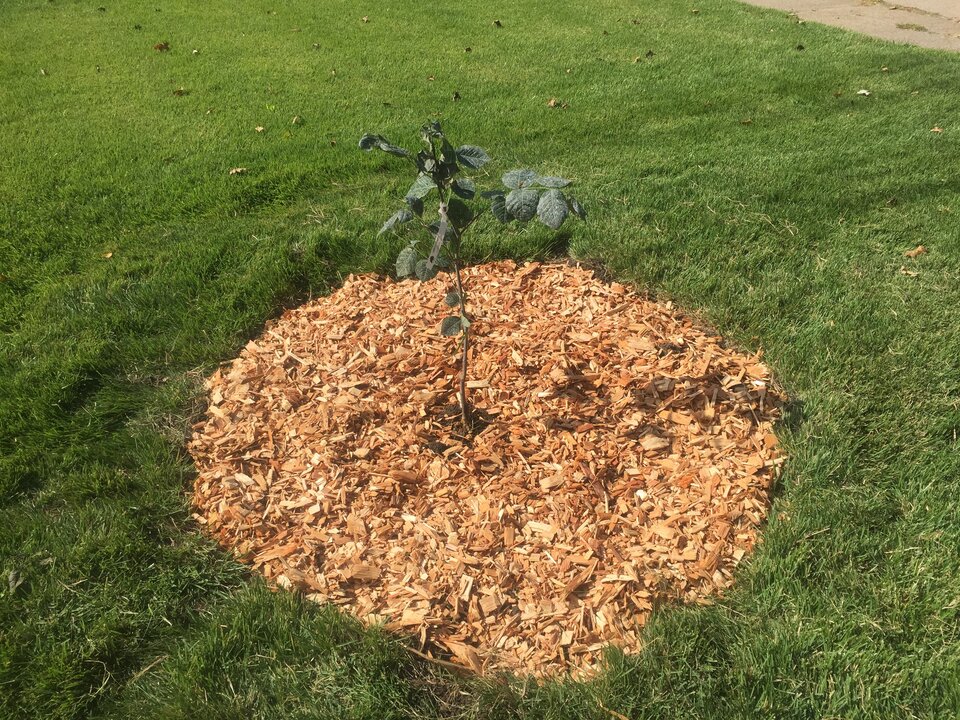Landscape Mulch for Water Conservation

Mulching landscape beds and gardens is a waterwise practice. Conserving soil moisture, controlling weeds, mitigating soil temperature extremes, and improving soil health are key benefits.
Landscape mulch materials can be organic (plant based), inorganic (e.g. rocks) or synthetic (e.g. rubber). Depending on the type used, benefits can be maximized or they can be decreased or even prevented.
Mulch conserves soil moisture by reducing evaporative water loss from bare soil. It reduces soil compaction and crusting that leads to rain or irrigation water running off rather than soaking into soil. When weed growth is reduced, weeds are not competing for soil moisture.
In studies, coarse textured organic mulch like shredded wood or wood chips placed on bare soil worked best in conserving soil moisture. Landscape or geotextile fabric, fine textured organic mulch like sawdust, and mulch with a waxy component, e.g. bark or cardboard, were found to become hydrophobic and repel water making them less effective.
Inorganic stone mulch and synthetic rubber mulch raise air temperature around plants. This increases evapotranspiration for more moisture loss from plants, and has a negative impact on photosynthesis.
While stone placed on landscape fabric initially conserves soil moisture, over time soils tend to become abnormally dry beneath the fabric. As it is difficult to access soil beneath stone and weed mats, this goes unnoticed and plants become drought stressed.
Mitigating soil temperature is beneficial. Hotter soils and temperature extremes are plant stressors. For example, fine roots and root hairs take up most of the moisture and nutrients plants need. While these roots naturally die and regrow, soil temperature extremes increase the extent to which they are killed, leading to stress.
Studies comparing mulched soil to bare soil showed summer soil temperatures were reduced 8 to 13 degrees Fahrenheit. In the studies, coarse organic mulch was once again shown to be most effective. Synthetic mulch proved to be the poorest at mitigating soil temperatures.
As for soil health, such as increasing organic matter content, organic mulches are the only type that can achieve this. And the positive effect they have on soil moisture, temperature, and oxygen levels also improves soil health by promoting beneficial microorganisms and wildlife like earthworms.
While the inorganic mulch of rocks placed on landscape fabric is popular, this tends to be people focused rather than plant and soil focused. Stones are aesthetically pleasing and do not need to be replenished on a regular basis.
For plant and soil health, studies show coarse, inorganic mulch placed on bare soil is best. Apply it to a weed-free, moist soil. Use a 3 to 4-inch deep layer and mulch as wide of an area as feasible.
Two concerns with wood mulch are attracting termites or transmitting diseases to healthy trees. Studies prove both are very unlikely to happen and should not deter the use of wood-based mulch.
Rubber mulch greatly increases temperatures around plants, leaches chemicals into soil, and are the most flammable of mulches tested. Do not use rubber mulch in landscapes.
This article was reviewed by Emily Stine